George Washington is quoted as saying, “We need chaplains” while addressing the Continental Congress before the service was formally established on July 29th, 1775. That means U.S. Army chaplains have been around since before the Declaration of Independence was signed.
During the Revolutionary War, they acted as spiritual leaders to help inspire and motivate soldiers. Little has changed since then. The U.S. Army Chaplain Corps (DACH) still serves a critical role in the daily functions of the Army by providing religious and moral support.
Every year since its birthday, the anniversary of the DACH is celebrated. This July 29th, you can use the opportunity to acknowledge the exemplary work of the DACH in your own way.
Here, we’ll discuss the DACH”s mission and how you can potentially become a chaplain.
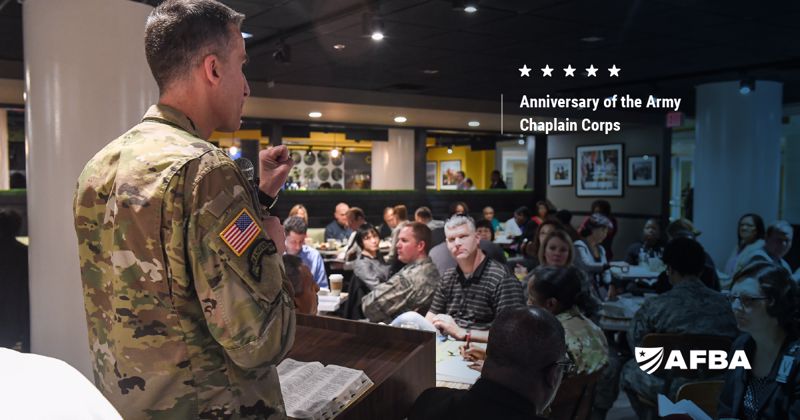 “The appearance of the U.S. Department of Defense (DoD) visual information does not imply or constitute DoD endorsement.”
“The appearance of the U.S. Department of Defense (DoD) visual information does not imply or constitute DoD endorsement.”What does the DACH do?
The primary purpose behind the DACH is to offer support to the U.S. Army. This is usually religious support for a wide range of faiths, but they also help those who do not subscribe to any particular religion. This can include counseling, church services or other moral support. They also:
- Serve in correctional or medical facilities or combat hospitals.
- Offer family or marriage counseling.
- Can act as instructors in officer service schools.
Some chaplains choose to further their training and education to prepare them for higher-level work. This could mean taking on staffing responsibilities, handling personnel-related tasks, or being involved in financial and logistical duties.
The DACH never stops working. In peacetime or war, whether soldiers are deployed or at home, chaplains are always there to offer their services. They understand that servicemembers have a near-infinite variety of backgrounds, and they aim to help all who could benefit.
Army chaplains aren’t restricted in what type of unit they serve. Intelligence, infantry, community ministries, hospitals — you will find chaplains in all these places.
Considered non-combat personnel, chaplains are supported by religious affairs specialists. In addition to organizing worship services and religious programs, these specialist troops have administrative duties and must act as an armed guard to ensure chaplains’ safety in combat situations.
How do you become an Army chaplain?
Chaplains serve a vital purpose in their units, meaning they must undergo extensive education and training programs to prepare themselves for such great responsibilities. They’re treated as Army officers and receive all the privileges other officers have.
Unlike some other Army positions, Army chaplains must have formal higher education: at least a bachelor’s degree. In some cases, graduating college seniors can enlist.
An endorsement from the applicant’s faith group is necessary, as is being enrolled full-time in an accredited graduate program that can qualify them for ordination.
Another challenge is the Chaplain Candidate Program (CCP). Ministry students may begin this training while they’re still in school.
Chaplains are exempt from Basic Combat Training (BCT) but still undergo physical tests to build strength and endurance. Chaplains must pass the Chaplain Basic Officer Leader Course (CHBOLC): In addition to requiring an adequate level of fitness, this course trains chaplains academically and spiritually.
Celebrate the anniversary of the Chaplain Corps this July 29
The DACH has had nearly 250 anniversary celebrations during its lifetime, and they’ve remained a core part of many Army units. On July 29th, show your appreciation for the DACH and its role in providing religious support to every soldier.
What led up to the Declaration of Independence? Yes, it certified America as being independent of Britain, but influential thinkers like John Adams — who was initially considered a radical for wanting complete separation — didn’t become mainstream until Thomas Paine’s “Common Sense” publication. This piece will explore the development of how the idea of full independence came to be.
King George’s mercilessness shaped later public opinion
At the very beginning of the Revolution, most colonists didn’t want independence from Britain, but reconciliation. Still feeling loyal to King George III and Britain but opposed to the extreme taxes and unfair laws imposed upon them, they wanted to make a deal with the king and return as British citizens.
John Adams was one of the first individuals who called for full independence — to make America its own nation and government. However, he and others who thought like him were unable to change the majority opinions of the colonists — for a time.
Public sentiment started to shift as King George III ramped up his efforts to eliminate the rebels. When news of his intentions reached the colonies, the ideals of Adams and other “radicals” rapidly became more popular.
However, even this wasn’t the turning point. Many conservatives still held on to the idea that reconciliation was possible. The notion that America should be fully independent only became cemented in the majority of colonists’ minds after Thomas Paine published a pamphlet titled “Common Sense.”
 “The appearance of the U.S. Department of Defense (DoD) visual information does not imply or constitute DoD endorsement.”
“The appearance of the U.S. Department of Defense (DoD) visual information does not imply or constitute DoD endorsement.”“Common Sense” and its influence
Thomas Paine’s 47-page “Common Sense” pamphlet was published in Philadelphia in January 1776. Within it, Paine illustrated a passionate ideal for American exceptionalism. Believing America represented a “promise” that could only be achieved through total independence and separation between Americans and Britains, he laid out his case that this was the only natural option.
“Common Sense” was immensely popular. Its ideas influenced a massive number of colonists and galvanized support for the Revolution. By the time the Revolutionary War ended, it had sold about 500,000 copies — an astronomical number for its time. The publication would even influence some parts of the U.S. Constitution and the Bill of Rights.
Jumping back to 1776, the Continental Congress soon adopted Paine’s idea of separating from Britain and forging a new nation. On July 2, about seven months after Paine’s publication was released, Congress held a vote on declaring independence. The Declaration of Independence was ratified on the 4th and America became its own nation.
Thomas Paine’s humble beginnings belied his impact on history
Born in Thetford, England in 1737, Thomas Paine had little formal education and was plagued by a series of job failures and tragedies.
His luck would pick up when he met Benjamin Franklin in the spring of 1774. Offering Paine a letter of introduction so he could start a new life there, Franklin suggested he move to the American colonies. In November, Paine would arrive in Philadelphia and soon began editing the Pennsylvania Magazine. It was here he wrote a series of pieces following his ideals.
While nothing he wrote came anywhere near the influence of “Common Sense,” Paine wrote other essays and pamphlets. These included “The Age of Reason” and “Rights of Man,” which discussed religion’s role in society and a defense of the French Revolution, respectively. Another example proving he was well ahead of his time is “African Slavery in America,” a piece condemning the slave trade.
Celebrate the history of America’s independence this July 4th
America may never have been its own nation without the ideals and philosophies of people such as John Adams and Thomas Paine. This Independence Day, be grateful that these immensely influential and historically invaluable individuals helped bring you the liberty you have today.
May stands out for a lot of reasons — summer is just around the corner, after all — but it also distinguishes itself as being National Military Appreciation Month.
National Military Appreciation Month consists of six holidays perfect for honoring service members and their families. While every day is a good day to honor those in the armed forces, these days are distinguished as particularly special.
Let’s talk a little about each in the chronological order they fall in 2023.
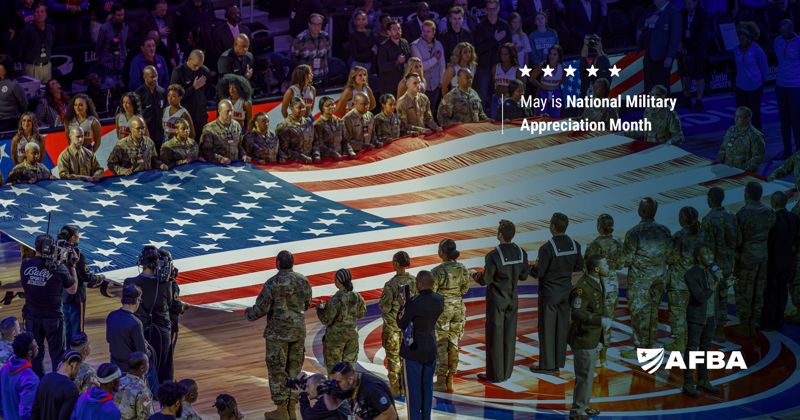 “The appearance of the U.S. Department of Defense (DoD) visual information does not imply or constitute DoD endorsement.”
“The appearance of the U.S. Department of Defense (DoD) visual information does not imply or constitute DoD endorsement.”The individual holidays in National Military Appreciation Month
Each of the six military holidays in May serves a unique purpose, dedicated to a specific cause.
Loyalty Day (May 1)
This holiday is unique in both its relative obscurity and its purpose compared to the other military-themed holidays in May. Congress has described Loyalty Day as “a special day for the reaffirmation of loyalty to the United States and for the recognition of the heritage of American freedom.” If there’s an ideal day to recite the Pledge of Allegiance, this is it.
VE Day (May 8)
Short for “Victory in Europe Day,” this day marks the anniversary of the end of World War II on the European front in 1945. This holiday is recognized and celebrated across the world, and the U.S. is no exception. We had many allies in Europe who helped end the Second World War, and this day is for them.
Military Spouse Appreciation Day (May 12)
This day takes place every year on the Friday before Mother’s Day — May 12 in 2023. As you can probably tell by the name, this particular holiday is to commemorate and honor the spouses of those in the armed forces. These husbands and wives serve in their own capacities, encouraging their partners in any way they can. For many service members, their spouse’s support is invaluable.
Mother’s Day (May 14)
This holiday is held annually on the second Sunday of May. In 2023, that’s the 14th. Whether it’s a mother with a child in the military, a mother who serves or one who helps care for children with a serving father, they all deserve a special place on Mother’s Day. Many mothers are veterans themselves who instilled in their children values taught by the military: honor, discipline and patriotism, to name just a few.
Armed Forces Day (May 20)
Every third Saturday in May is when the U.S. celebrates Armed Forces Day, which in 2023 lies on May 20th. First celebrated in 1949, this day specifically honors those who currently serve in the armed forces. Originally, there were individual holidays for each military branch: Army Day, Navy Day and so on. This is the perfect time to help out the families of those who are away from home, selflessly serving their country.
Memorial Day (May 29)
The month’s observances end on the last Monday in May, when Memorial Day is held — May 29th, 2023. Veterans Day is for those who formerly served, Armed Forces Day is for the currently serving and Memorial Day is for those who have given their lives to protect the American way of life. Many visit the graves of fallen service members to pay their respects to these honored souls.
There is no better time to honor those in the armed forces
The year consists of many military-themed holidays, but no month is so bursting with meaning than National Military Appreciation Month. This year, demonstrate your appreciation for everything the service members in our armed forces do by recognizing and commemorating each holiday.
If you’re a servicemember, veteran, dependent or any other eligible type of passenger, you may qualify for free accommodations on Space-A flights if a vacancy is available.
What is a Space-A flight?
Space-A stands for space-available flight and is also referred to as military hopping. If a Department of Defense (DoD) aircraft has vacancies when traveling between air bases, eligible persons may fill these seats at no charge, according to the John S. McCain National Defense Authorization Act. The purpose of Space-A is to give certain types of people the freedom to travel on flights that have vacancies.
Space-A flights can be on commercial airplanes, but they might also be on fuel tankers or cargo aircraft.
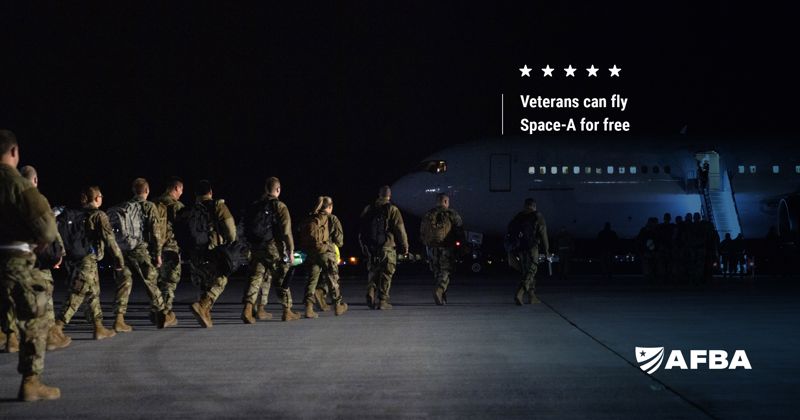 “The appearance of the U.S. Department of Defense (DoD) visual information does not imply or constitute DoD endorsement.”
“The appearance of the U.S. Department of Defense (DoD) visual information does not imply or constitute DoD endorsement.”The different categories of travelers
Depending on who you are and the reason for your travel, you’re placed in one of six categories. When Space-A considers who gets priority when someone requests to fill a vacancy, the lower categories get picked first. Here are the different categories and what they might include:
Category 1: Emergency leave travel
The emphasis here is on the word “emergency.” People who might qualify for this category include DoD civilian employees who are stationed overseas or full-time American Red Cross employees serving in a military capacity.
Category 2: Accompanied environmental and morale leave (EML)
This might include DoD Dependent School (DoDDS) teachers on vacation or sponsors traveling for EML purposes.
Category 3: Ordinary leave, house hunting TDY
Those on ordinary leave or military members who are house hunting (following PCS orders) generally qualify for this rank.
Category 4: Unaccompanied dependents on EML
Family members on EML are in this tier. This also encompasses DoDDS teachers and their family members.
Category 5: Permissive TDY, students, dependents, post-deployment/mobilization respite absence
If their sponsor is stationed overseas or in Alaska or Hawaii, students fall into this group.
Category 6: Retirees, dependents, reservists and disabled veterans
This category would apply to these types of flyers on vacation, for example.
How to sign up for Space-A flights
Signing up for a Space-A flight is very different from booking a seat on a commercial aircraft. You won’t be using traditional airports or booking accommodation at all; instead, you’ll communicate with an Air Mobility Command (AMC) Passenger Terminal to reserve a spot.
These are instructions to keep in mind, according to AMC. More information can be found on their website.
- Ensure your eligibility. There are six categories of travel that determine your eligibility for Space-A, with lower categories getting higher priority. This includes emergency leave, unfunded travel, and accompanied or unaccompanied environmental and morale leave (EML). Which category you fall into depends on the reason behind your travel and your duty status.
- Check which locations are available. Review your closest AMC Passenger Terminal through their social media page or website.
- Make sure your documents are in order. Look at which travel documents you need to prepare before your flight. This includes your passport (with visas, if applicable).
- Register at an AMC Passenger Terminal.
- Look at flight schedules. There is a 72-hour flight schedule on the American Forces Public Information Management System (AFPIMS) web page.
- Check-in at the terminal counter. Familiarize yourself with any newly updated flight information and declare that you are present. If everything is in order, the terminal will give you a Space-A call when they’re ready for you to board.
Roam the skies for free with Space-A flights
While not everyone is eligible to ride on a Space-A flight under all circumstances, as long as you meet the basic requirements, you can take advantage of this perk. For more information, contact your nearest AMC passenger terminal.
There is still a strong stigma attached to mental health. Mental Health Awareness Month is the perfect time to help shatter that perception and inspire those who need it to seek out help.
One group that experiences increased rates of psychiatric illness are first responders and armed forces servicemembers, especially those who were in combat. Too many suffer in silence, though they don’t have to, as there are many programs available specifically for veterans and first responders alike. Operation Resiliency is one such example that aims to help servicemembers deal with mental health issues by encouraging interaction between soldiers who share bonds forged through combat in the military.
 “The appearance of the U.S. Department of Defense (DoD) visual information does not imply or constitute DoD endorsement.”
“The appearance of the U.S. Department of Defense (DoD) visual information does not imply or constitute DoD endorsement.”Operation Resiliency
The underlying concept behind Operation Resiliency is that soldiers who form bonds in combat can help each other cope with trauma. Operation Resiliency hopes to assist both active duty and veteran service members better manage their mental health by bringing them together with no-cost retreats close to their homes. They also follow up with these individuals in an effort to keep connections strong among these soldiers.
Since the end of 2022, Operation Resiliency has served 468 service members. The project aims to hold six more retreats throughout 2023.
The origin of Operation Resiliency
The concept for Operation Resiliency came from Sarah Verardo, whose husband, Mike, was badly wounded in Afghanistan.
Verardo served in Bravo Company, 2nd Battalion, 508th Parachute Infantry Regiment of the 82nd Airborne Division. This unit fought in the especially deadly Arghandab region in Afghanistan, where nearly half of the soldiers in the team were awarded Purple Hearts. When several of these infantrymen committed suicide, Sarah called retired Army Command Sgt. Maj. Donald McAlister, first sergeant for Bravo Company in the Arghandab. They conceived of Operation Resiliency as part of their joint belief that they should do their part to prevent further tragedy.
McAlister led the first retreat for veterans in Bravo Company in North Carolina, where nearly 100 veterans of the company showed up. He believed he should lead them with full transparency of his own difficult reality to encourage others to do the same. “…Leading by example was being open and honest, and letting them know that mentally, physically, I’ll never be the man I was before…But at the end of the day, that’s OK…I told them, ‘You know, it’s OK for us all to not be OK, as long as we, as long as we acknowledge it. We can see the enemy, see what’s coming at us,” said McAllister, according to a report by the U.S. Department of Defense.
Psychiatric illnesses are not a sign of weakness
One in five adults suffers from mental illness, as claimed by the National Institute of Mental Health. This statistic is the same for first responders and those who serve in the armed forces. No one — no matter how tough the person may be — is immune, and no one can “power through” psychiatric disorder through sheer force of will any more than they can a broken leg.
If you’re experiencing a crisis or if you feel you may hurt yourself or others, you can dial 988, which connects you to the Suicide and Crisis Lifeline. Calling 911 is also an option.
Bravo Company is an example of the strongest among us recognizing their experiences and reaching out to their combat brothers for relief. Programs such as Operation Resiliency give these soldiers hope — which is what they require most in their time of need.
May is a special time to celebrate exceptional individuals of Asian American and Pacific Islander heritage. We’ll discuss three individuals who offer inspiring stories of their own.
Ellison Onizuka
Ellison Onizuka was the first Asian American to break through the atmosphere and fly into the great beyond of space on the Space Shuttle Discovery in 1985. He was also a distinguished servicemember of the U.S. Air Force.
While in the Air Force, Onizuka served as a test pilot and flight test engineer at the Sacramento Air Logistics Center, McClellan Air Force Base. At the U.S. Air Force Test Pilot School, he spent over 1,700 registered hours flying, ultimately earning the rank of Colonel.
As an astronaut, he was part of NASA’s historic Astronaut Class of 1978, also known as the “Thirty-Five New Guys.” This was the first new class of astronaut candidates since 1969.
Unfortunately Onizuka was one of the victims of the tragic Space Shuttle Challenger explosion in 1986. However, his memory is alive and well, and he’ll forever be an honored astronaut and Air Force veteran.
Norman Mineta
A member of the U.S. Army before becoming a politician, Norman Mineta would ultimately end up as the longest-serving member of the U.S. Department of Transportation and be in charge of reforming trust in flying after 9/11. He was one of the driving forces behind the formation of the Transportation Security Administration.
Mineta started his life as the son of Japanese immigrant parents. He and his family were forced into internment camps during World War II. When he was released, he attended and graduated from the University of California of Berkeley. Upon joining the Army in 1953, he served as an intelligence officer in Korea and Japan.
He soon decided to enter the political sphere in his hometown of San Jose, California. Mineta served on the City Council from 1967 to 1971 before becoming mayor in 1971 until 1974. This made him the first Asian American mayor of a major U.S. city. He would go on to eventually become a Congressman, overseeing the Department of Transportation during the 9/11 attacks.
Mineta was deeply affected by his experiences during World War II and became a prominent advocate for Asian American civil rights. One of his most notable accomplishments was his successful effort to pass the Civil Liberties Act of 1988. This act represented an official apology and offered reparations to Asian Americans who were victims of Japanese internment camps.
Tammy Duckworth
Tammy Duckworth is currently a U.S. Senator from Illinois, though she’s also well known as the former Assistant Secretary of the U.S. Department of Veterans Affairs.
Before that, Duckworth was an Iraq War veteran who flew combat missions in a Blackhawk helicopter. While flying in combat in 2004, her aircraft was struck by an RPG. She lost both her legs and some function of her right arm. However, she went on to hold a successful career in politics where she focused on veterans’ rights.
As Director of the Illinois Department of Veterans’ Affairs, Duckworth succeeded in establishing programs for veterans, including:
- Advancing availability of housing and health care.
- Instituted a crisis hotline.
- Developing a tax credit incentive for employers to hire former servicemembers.
Duckworth continued to help veterans in exemplary ways, going on to serve under President Obama, where she made a great many advancements aimed at easing the challenges this vulnerable population commonly faces.
 “The appearance of the U.S. Department of Defense (DoD) visual information does not imply or constitute DoD endorsement.”
“The appearance of the U.S. Department of Defense (DoD) visual information does not imply or constitute DoD endorsement.”Celebrate Asian American and Pacific Islander heritage this May
This May, you can use these stories as inspiration to excel in your own life. All three of these individuals have inspiring stories noteworthy for their instances of bravery and exceptional accomplishments.
April is Military Child Month, and during this period there’s a particularly special day for children of military families. Military Brats Day, held on April 30th every year, offers a unique opportunity to recognize these “military brats” and bring attention to their uncommon experiences and challenges.
What is Military Brats Day, and where did it come from? Let’s dive in to explore this holiday.
The history of Military Brats Day
Military Brats Day has its origins in 2016 when the nonprofit organization Military Brats, Inc. made April 30 an unofficial holiday to celebrate kids from families in the armed forces. These “military brats” help support their parental servicemembers as proud sons and daughters — so in a very real way, they indirectly serve.
To some, the term “brat” might sound negative, but there’s a good reason why “military brats” are referred to that way. “BRAT” is an acronym originally coined in 1921 that stands for British Regiment Attached Traveler — family members who travel with service personnel. This became a popular way to refer to the kids of military families.
Military Brats, Inc. is currently lobbying Congress in an effort to make Military Brats Day an officially-recognized national holiday.
Military Brats, Inc.
Military Brats, Inc. has an explicit mission “to preserve the culture and heritage of those who grew up military.” Their goal is to bring assistance to military families through donation-led programs, wherever they may be needed.
Operation Footlocker is a program the organization is closely involved in along with the Museum of the American Military Family. Not to be confused with the educational program of the same name at the National World War II Museum in New Orleans, LA, this project aims to bring together military brats across the country at special events. The official Operation Footlocker home page defines it as “an occasion for brats to come together and swap stories, celebrate, and in various ways pay tribute to our roots.”
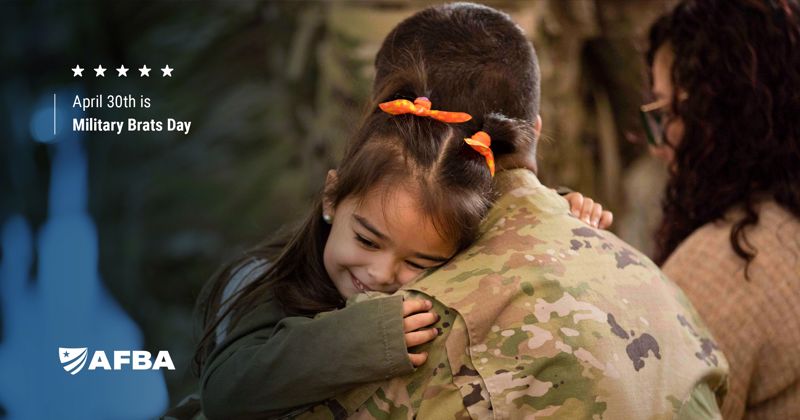 “The appearance of the U.S. Department of Defense (DoD) visual information does not imply or constitute DoD endorsement.”
“The appearance of the U.S. Department of Defense (DoD) visual information does not imply or constitute DoD endorsement.”What makes military brats unique?
Military brats typically share certain characteristics that make them (and their upbringing) unique. Families in the armed forces often need to relocate frequently, and this includes the children of the parental servicemember(s). These young people follow their parents wherever they go, and this presents them with some uncommon challenges that shape their character for life. A military brat changes schools an average of six times in life, according to National Today.
This means military brats often have innate difficulties making lasting friendships with peers and don’t always have a place to call their hometown — but it also makes them closer to their families. These children have strong ties to the constants in their lives, not the least of which are their parents and siblings.
Parents who serve in the armed forces often have special qualities that they either inherently possess or learn in the military, such as discipline, honor and responsibility. These values are commonly taught to their offspring, giving another special value to military brats.
It’s not uncommon for these children to live at military bases with their parental servicemember, and this means they have access to the same perks. For example, they can spend time in the libraries at these locations or other shared recreational facilities. They can participate in any morale, welfare and recreational (MWR) activities as well.
Find a way to celebrate and honor military brats on this Military Brats Day
There’s no better time to honor the children of military families than Military Brats Day. Whether you’re a parental servicemember or a military brat yourself — or simply want to demonstrate your appreciation for military brats — use this April 30th to show it.
This April is the perfect time to celebrate the achievements and contributions of Arab Americans, who bring a fascinating and diverse culture to American life. It’s also an excellent time to celebrate Arab Americans who have put their lives on the line in the U.S. armed forces to protect their fellow Americans.
The history of National Arab American Heritage Month
The first National Arab American Heritage Month took place in April 2017 as part of an initiative by the Arab American Foundation and Arab America. It initially received some support by a few states, but in 2022 the Biden administration formally recognized the month.
Virginia, Oregon and Illinois were the first states to pass legislation designating April as National Arab American Heritage Month. There is similar pending legislation in Rhode Island, Ohio, New York, Michigan, Maryland and Indiana.
 “The appearance of the U.S. Department of Defense (DoD) visual information does not imply or constitute DoD endorsement.”
“The appearance of the U.S. Department of Defense (DoD) visual information does not imply or constitute DoD endorsement.”The three surges of Arab immigration
The first known Arab Americans were Estebanico Azemmouri and Antonio Bishallany, who came to America in 1527. Azemmouri was from Morocco and Bishallany from Lebanon. However, the first boom of Arab immigration occurred in the late 1800s when Arab Christians sought refuge from persecution and violence in the former Ottoman Empire.
The second included Middle Eastern immigrants fleeing the Arab-Israeli War. After the Immigration and Nationality Act of 1965 ended the systematic process of favoring northern and western European immigrants, a third surge occurred.
U.S. Navy Petty Officer Michael A. Monsoor is the first Arab American to earn the Medal of Honor
The U.S. armed forces have a history of notable Arab Americans serving their country, but the first to obtain a Medal of Honor was U.S. Navy Petty Officer Michael A. Monsoor, who chose to give his life so his allies could be saved.
Monsoor earned this honor during Operation Iraqi Freedom in 2006. During a sub operation designated Kentucky Jumper, Monsoor served as an automatic weapons gunner as part of a sniper overwatch element atop a building in Ar Ramadi, Iraq. Their mission was to protect the western flank of the main force.
Monsoor and his team spotted four enemy scouts and engaged them. One of the enemy fighters was killed and another wounded. A separate SEAL and Iraqi Army team took down one more enemy combatant. However, this alerted the local populace to their location.
Monsoor’s position was attacked in the early afternoon the next day. Automatic fire from enemy vehicles and a rocket-propelled grenade sieged them, but they remained in the area to protect the flank, knowing fully well that the attacks would not stop. Monsoor, with an automatic heavy machine gun, was repositioned to a sniper hide-sight between two SEAL snipers. While watching for enemy activity, he felt something bounce off his chest and land on the deck nearby. Knowing it was a grenade, he shot to his feet, warned the two snipers next to him of the threat, and then threw himself onto the explosive to protect his teammates from harm.
Monsoor was killed in action, but he succeeded in saving his allies. He was positioned in such a way that he could have escaped the blast and saved himself if he chose to. Instead, he leapt on the grenade without hesitation. This action earned him the Medal of Honor.
This April, take part in National Arab American Heritage Month
National Arab American Heritage Month is a time to celebrate Arab culture and honor Arab American soldiers like Monsoor. The Arab culture is diverse and valuable to the U.S., and many Arab Americans serve in the U.S. armed forces. Take this opportunity to recognize what Arab culture brings to America and the sacrifices heroes like Monsoor have made to protect the American way of life.
Military spouse unemployment remains high because of frequent relocation. This places undue financial hardship on military families who rely on dual incomes. Thankfully, the issue has been steadily getting better, in no small part, because of the Military Spouse Employment Partnership (MSEP) program.
An introduction to the MSEP
The MSEP was founded in 2011 and has helped over 250,000 military spouses find employment in a wide range of industries. From October 2021 to October 2022, MSEP partners added an additional 40,000 spouses to that list, which is a record number for the program.
In late 2022, the Defense Department expanded its MSEP program to include an additional 70 government organizations, private sector companies and nonprofits. With the new additions, the total number of organizations participating in ensuring military spouse employment has reached over 600.
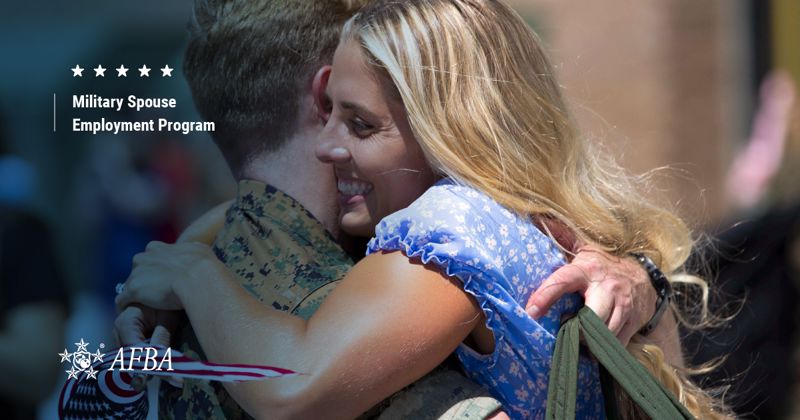 “The appearance of the U.S. Department of Defense (DoD) visual information does not imply or constitute DoD endorsement.”
“The appearance of the U.S. Department of Defense (DoD) visual information does not imply or constitute DoD endorsement.”MSEP Engage 2022
Virginia hosted the three-day MSEP Engage 2022 event in late October 2022. Gilbert R. Cisneros Jr., the undersecretary of defense for personnel and readiness, inducted the 70 new government organizations at the ceremony. He also spoke of the advances of the MSEP program. The third day of the event was notable for being the first time MSEP partners directly met with military spouses who were seeking employment.
Why military spouse employment is vital
Like many civilian families, military families often require incomes from both spouses to make ends meet. Unemployment in the general population has been getting far better in the past few years, with the current rate from April to July 2022 at 3.4%, according to the Bureau of Labor Statistics (BLS).
However, the rate of unemployment for military spouses is sitting at roughly 21%, making it a worse problem for military families. This is partially because military families tend to move often, which hinders their ability to keep a job for long periods. Military spouses are often educated, career-oriented individuals. Constant relocation brings with it a host of problems, not just in their financial lives, but also in their careers.
Military spouse unemployment is a known issue among many families in the armed forces, and it’s hurting the number of new enrollments in the military. Because of this and the associated financial burdens, these families have become less likely to recommend military service to their children, according to Mike Haynie, the executive director of the Institute for Veterans and Military Families at Syracuse University.
Hope for military spouse employment
Military spouse unemployment remains a serious issue for both the families themselves and the health of the armed forces as a whole. Satisfaction with the military is vital if service members are to stay on and encourage others, including their children, to join.
A sign of hope for this ongoing issue is in historical statistics: military spouse unemployment was at 30% in 1985 and has dropped considerably with the introduction of new programs and partnerships among the armed forces and private companies. The trend is slowly but surely moving toward more steady employment opportunities for military spouses.
Military spouses should know that they can be as eligible for unemployment benefits as anyone else. While not a complete or permanent solution, this can be a viable option to lessen any financial hardship a military family may be experiencing.
Unemployment is dropping among military spouses due to the MSEP program
New focus on the MSEP and other programs designed to encourage military spouse employment should offer new opportunities for military families so they can feel satisfied with steady employment and the easing of financial hardship.
Tales of great soldiers, secret intelligence groups and the dramatic beginnings of the Cold War can inspire, rivet and thrill almost anyone. A litany of exciting war-themed books have been recently released, and if you have the chance, these are sure to make a wonderful read.
The York Patrol
This historical account by James Carl Nelson focuses on the exceptional military accomplishments of Alvin Cullum York, who fought in World War I with the American Expeditionary Force. York was one of 13 soldiers in the force who each won a Medal of Honor after the events in the Argonne Forest in northeastern France. The day this transpired would be known throughout history as the Day of Valor.
York came from humble beginnings as an impoverished farmer in Tennessee but would later become one of the most celebrated fighters in the war, with several books retelling his deeds. He was even portrayed in a film, Sergeant York, as played by Gary Cooper.
Nelson gives special attention to the sixteen others who fought with York. These soldiers came from a range of backgrounds: Some were from big cities, others from small towns and some from foreign countries. Of particular note were a runaway who joined using a false name; a farmer like York who had a lineage tracing as far back as the American Revolution; and a Polish immigrant who enlisted to become an American citizen. These individuals would all become heroes on the Day of Valor, whose names would be written in history books to inspire others with their extraordinary valor and bravery.
Bletchley Park and D-Day
David Kenyon tells of the secret of Bletchley Park, the hub for Allied codebreakers during World War II. It was at this English mansion where the Government Code and Cypher School (GC&CS), consisting of thousands of intelligence workers, would intercept and crack the covert communications between the Axis Powers. The activities at Bletchley Park would be concealed until decades later in the 1970s.
The GC&CS was paramount to the success of the D-Day invasion in Normandy. Kenyon uses the once-classified documents and collected enemy information to tell the story of how Bletchley Park made this battle’s victory possible — and, ultimately, the Allied triumph in the war.
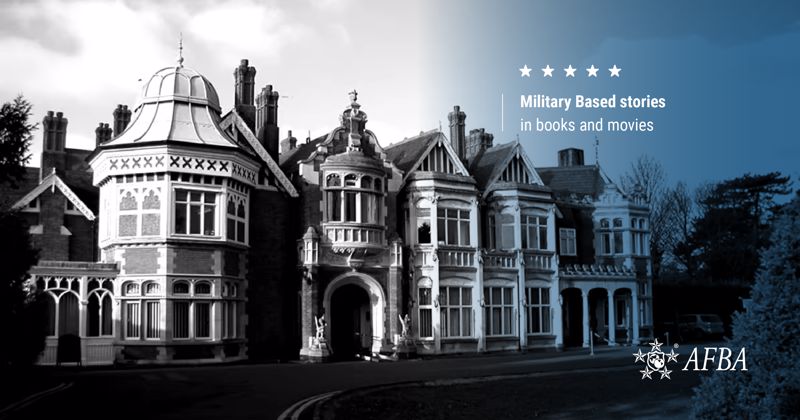 “The appearance of the U.S. Department of Defense (DoD) visual information does not imply or constitute DoD endorsement.”
“The appearance of the U.S. Department of Defense (DoD) visual information does not imply or constitute DoD endorsement.”Checkmate in Berlin
Giles Milton wrote this tale of the beginning of the Cold War, taking place almost immediately after the end of World War II. Describing the intense mistrust among the Allied powers that took over Berlin after the Yalta Conference in 1945, this thrilling tale of rampant suspicion among these flawed leaders vying for power speaks of the breakdown between the Western powers and the Soviet Union.
The book features an account of historical figure Frank “Howlin’ Mad” Howley, who was appointed commandant of Berlin’s American sector. Deeply distrustful of the Russians, Howley considered General Alexander Kotikov, the commandant of the Soviet sector, to be an object of intense suspicion. Howley correctly believed the Soviet leader was an agent of Stalin whose mission was to rid Berlin (and ultimately, Germany) of the Western allies.
Milton covers the bases of all the major players to form a breathtaking human drama — one that would help shape the world we know today.
Choose one or all of these acclaimed books for your next reading binge
Whether you fancy an account of exceptional men, a secret intelligence agency or a story detailing the beginnings of the Cold War, you’ll undoubtedly find something in one or all of these new offerings. The many tales of military history and the range of individuals who populate these stories are sure to keep you turning the page well into the evening hours.
